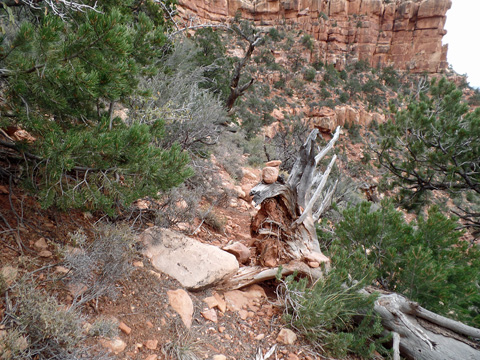 |
Shortly after leaving the
Nankoweap Trail you may pass by this fallen tree with a cairn on top of
it. The route along here is generally brushy and it seems best to
stay just above the cliff band. [View is looking towards the east;
i.e. towards the Nankoweap Trail.] |
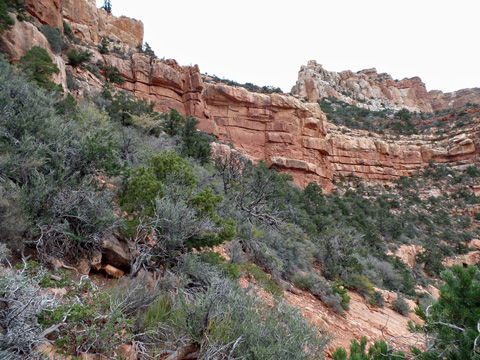 |
Looking back at the area
contoured with Saddle Mountain looming above. |
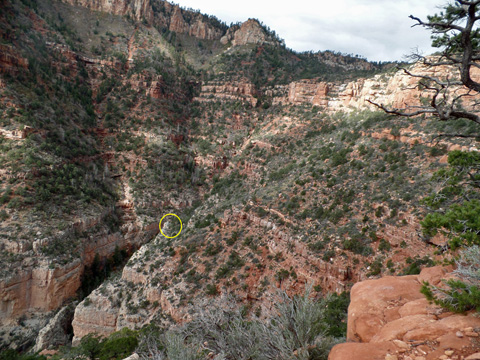 |
The target descent off
the Redwall is shown by the yellow circle. The hanging forest can
be seen below it to the left. |
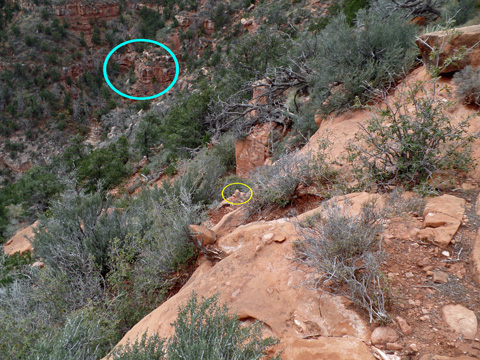 |
Is this the major cliff
you have to bypass? I am thinking that the lowest one is just a
walk through out here and that the upper one is not difficult if you
find the right spot. Be that as it may, the only photos I have of
any of the climbs here are only of this one spot. There is a cairn
in the yellow circle to help guide one down at this spot (it is easier
to see coming up!). The blue circle shows the same area circled on
the earlier photo to give this some context. |
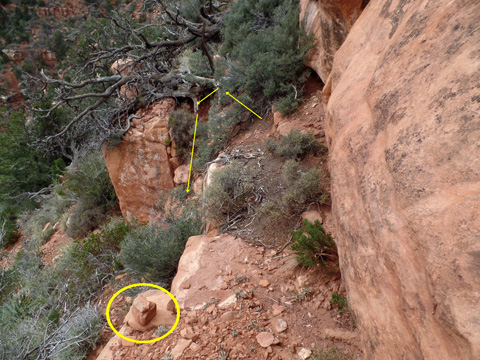 |
Getting down to the cairn
and one can see that the route is through the bushes and dead snags to a
steep slope through lower portion of this cliff. |
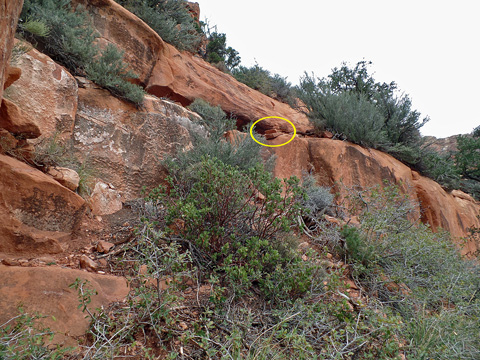 |
Looking back up at the
cairn. The route is just out of view to the left. |
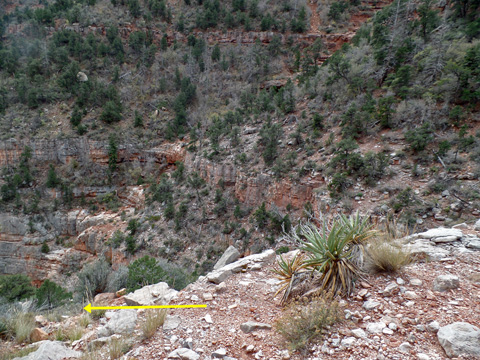 |
Once at the right spot
atop the Redwall, the route heads out to a peninsula-like formation that
sits between the two walls of the canyon. I have found a
reasonably easy-to-follow trail through here until you get to the craggy
limestone that you must descend to get to the hanging forest on the
opposite side of the canyon. |
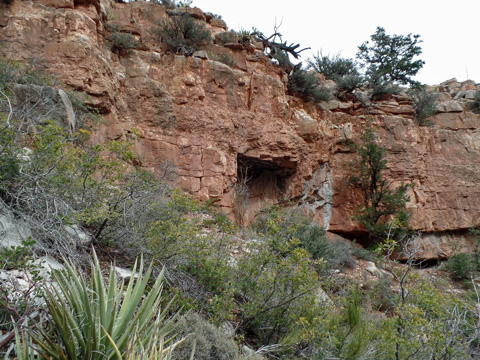 |
Looking back to the left,
a notable overhang may catch your attention. |
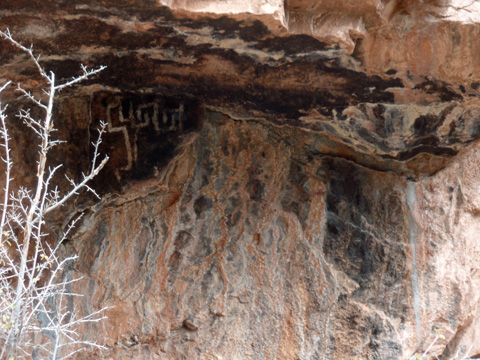 |
Under the overhang are
some pictographs and this one was the most intriguing to me. |
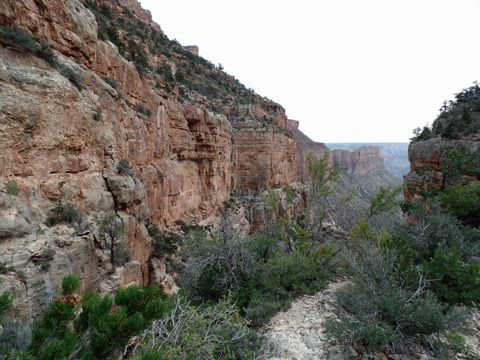 |
Clear path for a short
while as you get separated from the north side of the canyon. |
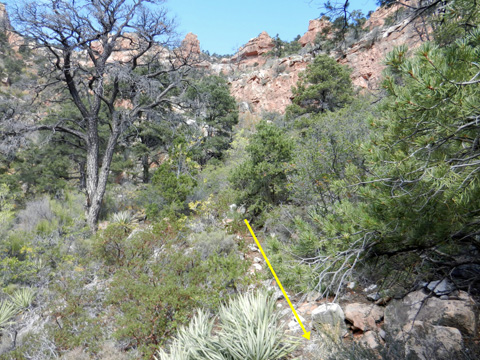 |
Continued easy going as
long as the slope is gentle and covered in grasses and bushes. |
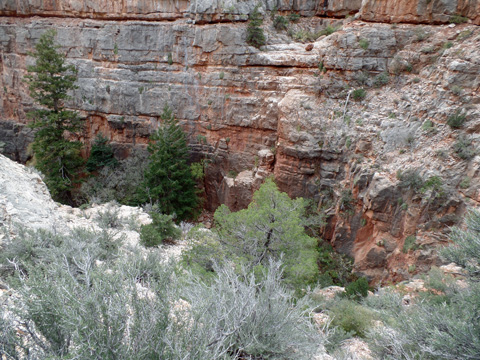 |
Looking over at the south
side of the canyon and the hanging forest. |
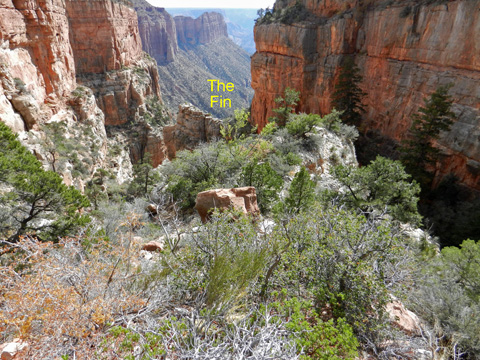 |
As you continue out to
the end of the peninsula, you will see the fin that marks the top of the
steep Redwall descent, just past the hanging forest. |
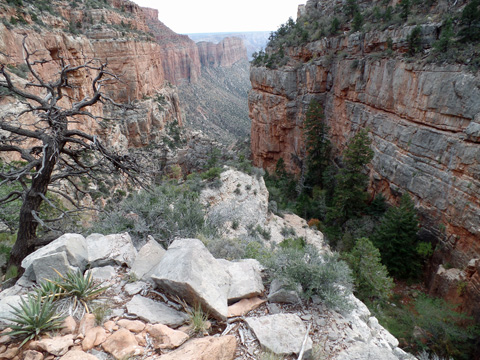 |
And, closer to the end of
this point. The route I've followed was to the left here (north
side), sometimes along a residual path and sometime climbing through the
rocky outcrop. |
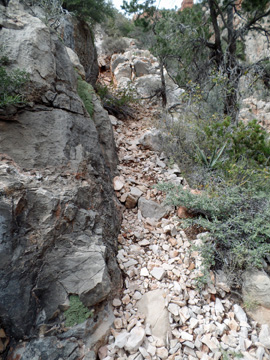 |
Steep path over the
point. |
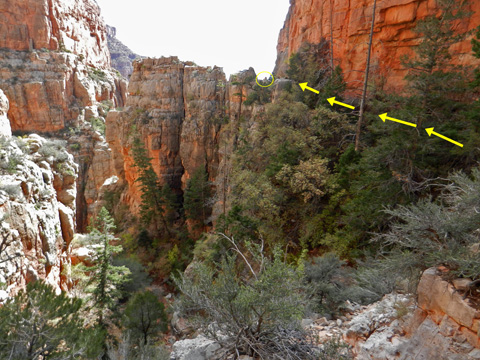 |
As you get lower you can
see where you need to go - the route follows along the base of the cliff
behind the hanging forest out to a small saddle (cairn is circled) that
marks the descent. |
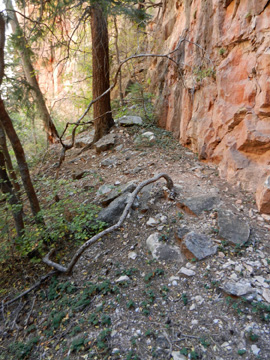 |
The route between the
cliff and the trees. |
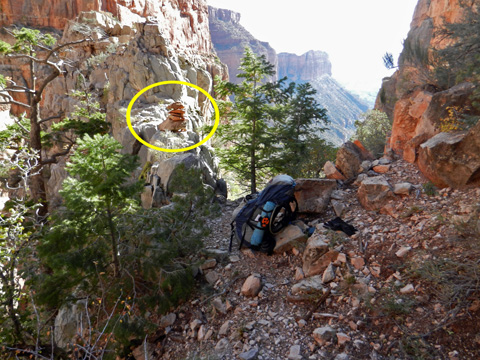 |
Out at the saddle with
the cairn. |
 |
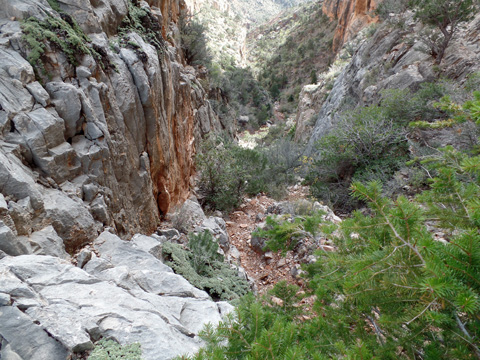 |
Looking down the descent.
I've only come up this route following very loose but short switchbacks
all the way up. |
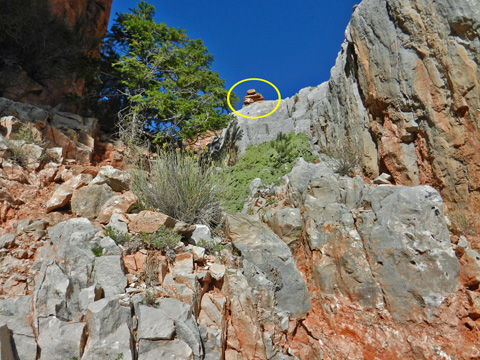 |
The cairn is visible from
near the top of the route. |
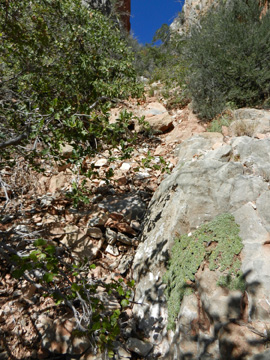 |
Looking up a typical
section of the route through the Redwall. |
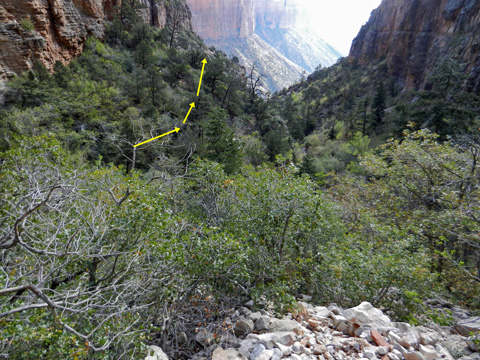 |
At the bottom of the
descent you are in the main bed. You cross over and find a good
path on the other side that will take you on a contour of a wide bench
for a short distance. |
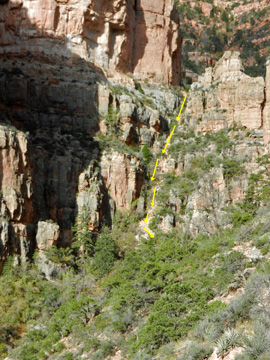 |
Looking back you can see
the route coming down the Redwall. |
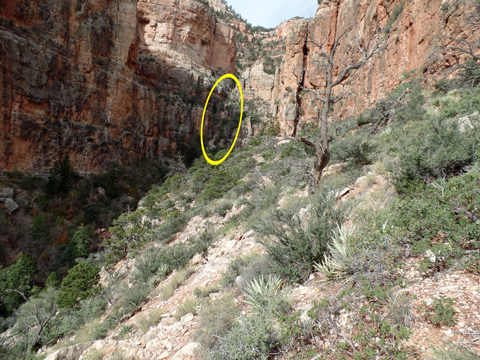 |
Another view of the route
down the Redwall from along the bench. |
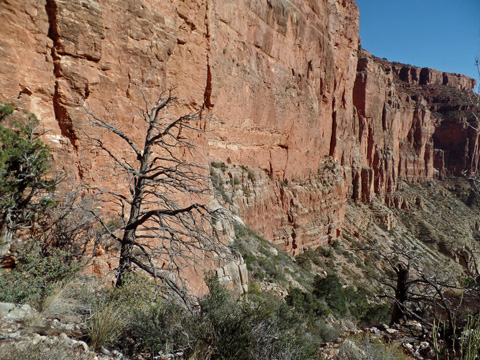 |
The view as you near the
end of the contour along the bench. Here you will have to scramble
down off this bench. It seems best to continue on this direction
until you get to a rocky ravine marked with occasional cairns leading
you back to the bed of the canyon. |
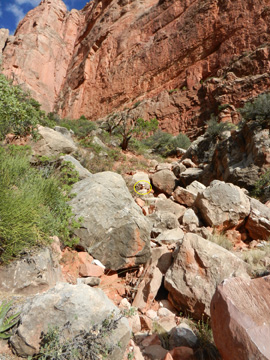 |
Rocky ravine with small
cairn circled. |
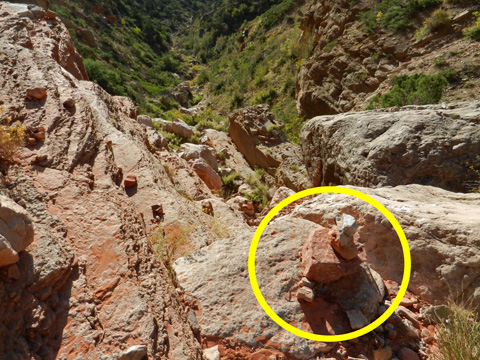 |
Once in the bed you make
your way down to the Muav steps, marked by this cairn. There are
minor obstacles along the way. Here you gingerly step down and
cross over to the right hand side of the big flat cliff below.
You're now home free, but it will still take 90 minutes (give or take)
to reach the junction with the wet arm that comes from Mystic Falls.
At this junction, there is a nice camping area up on the terrace between
the two arms. |
 |

